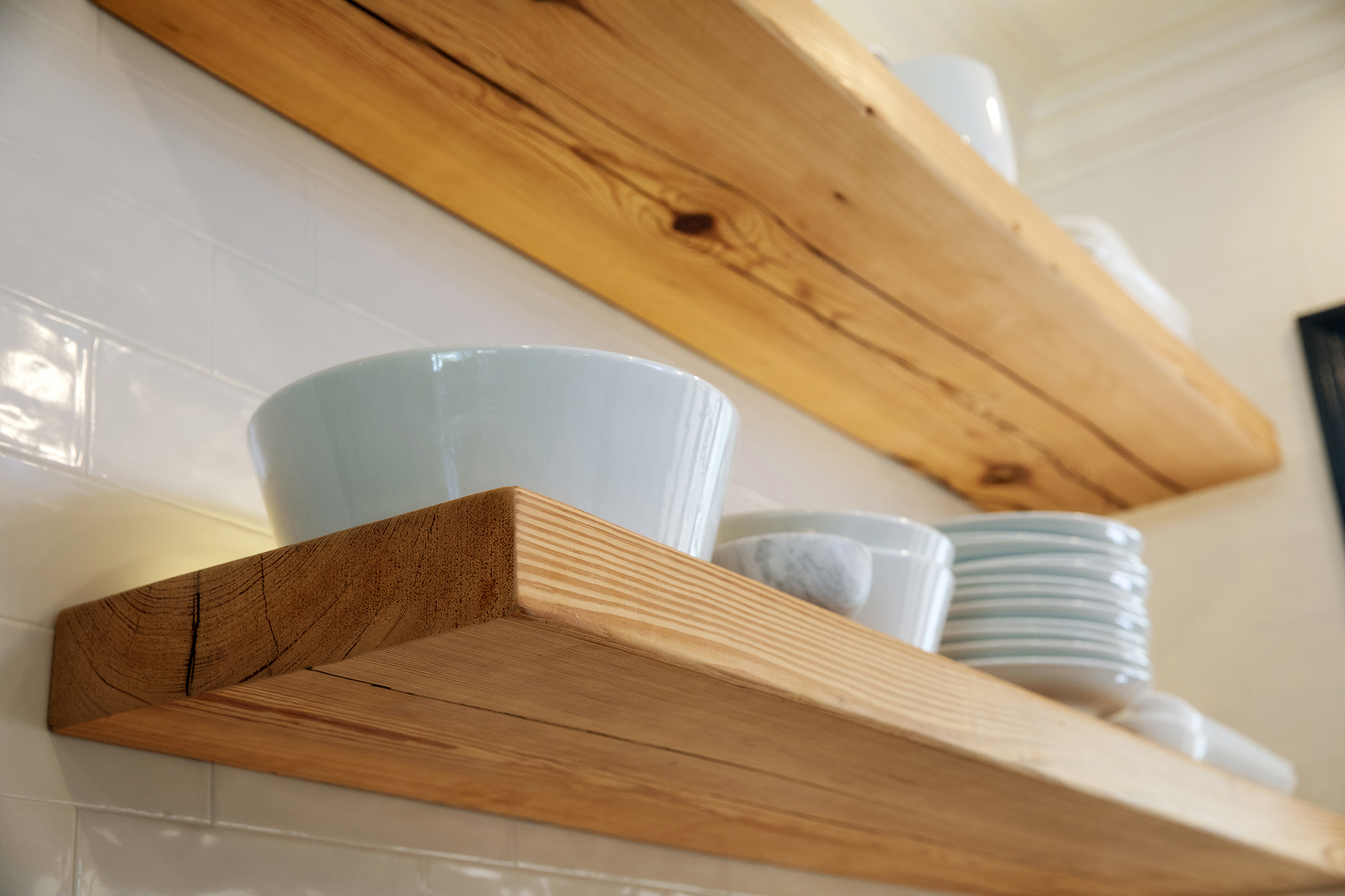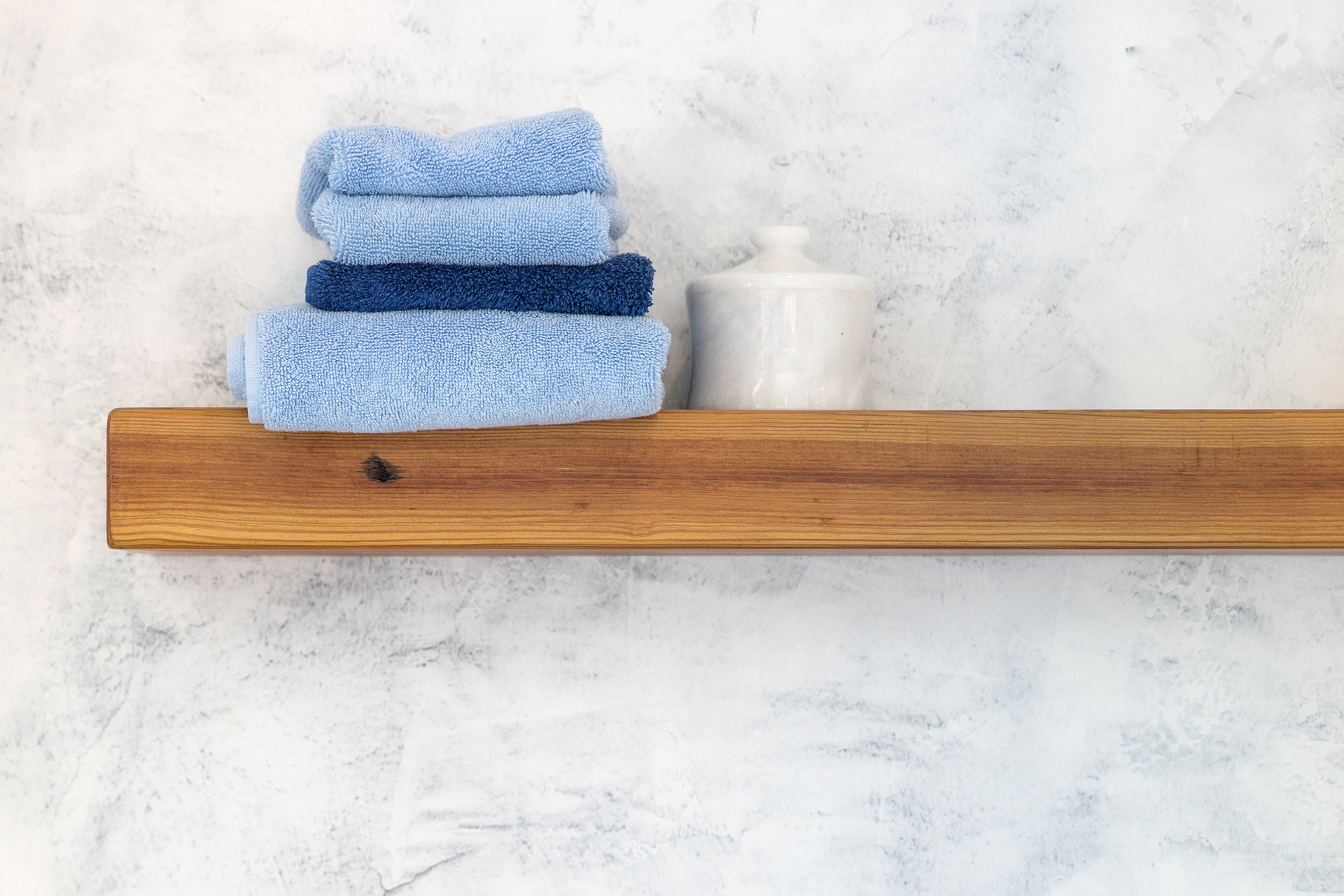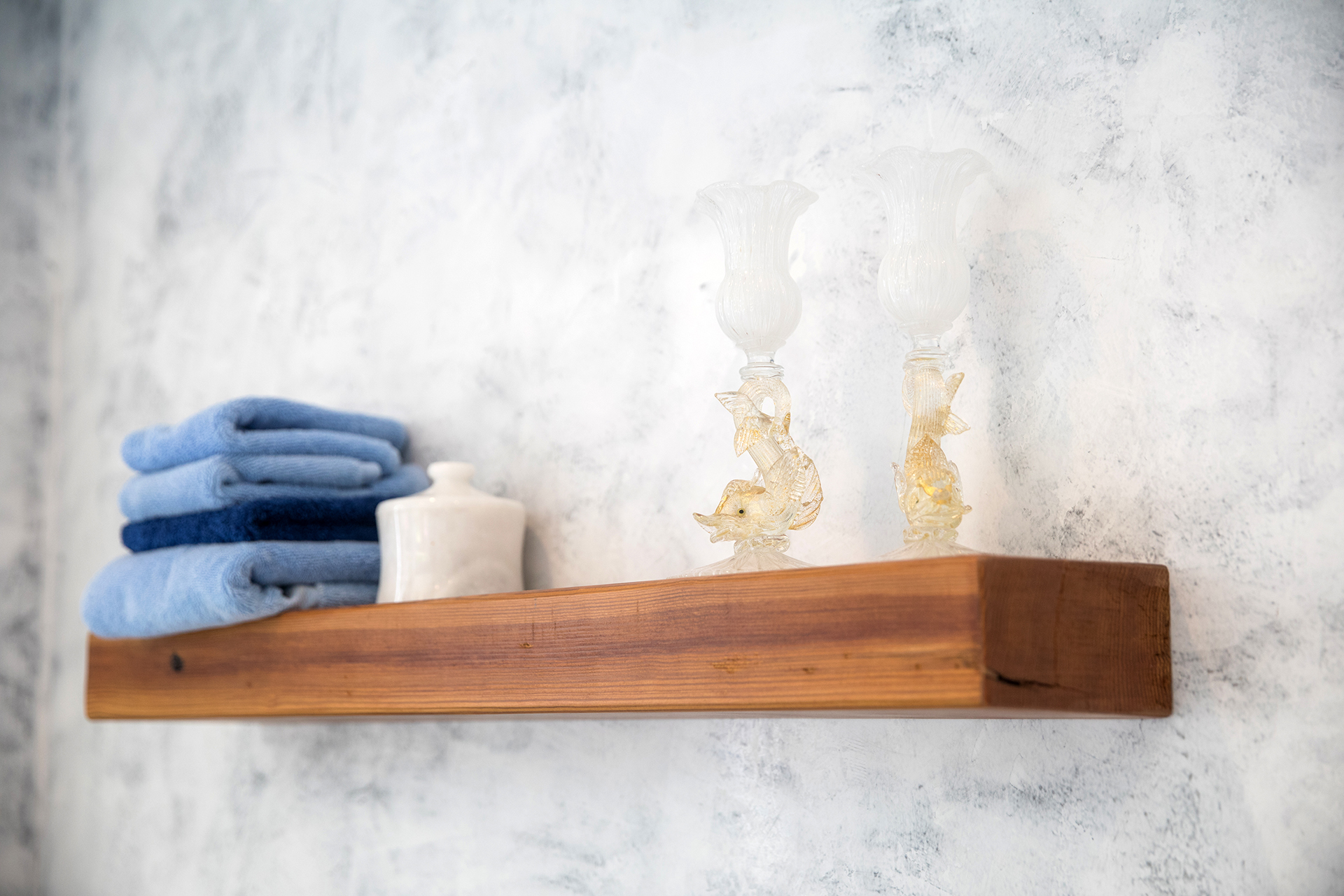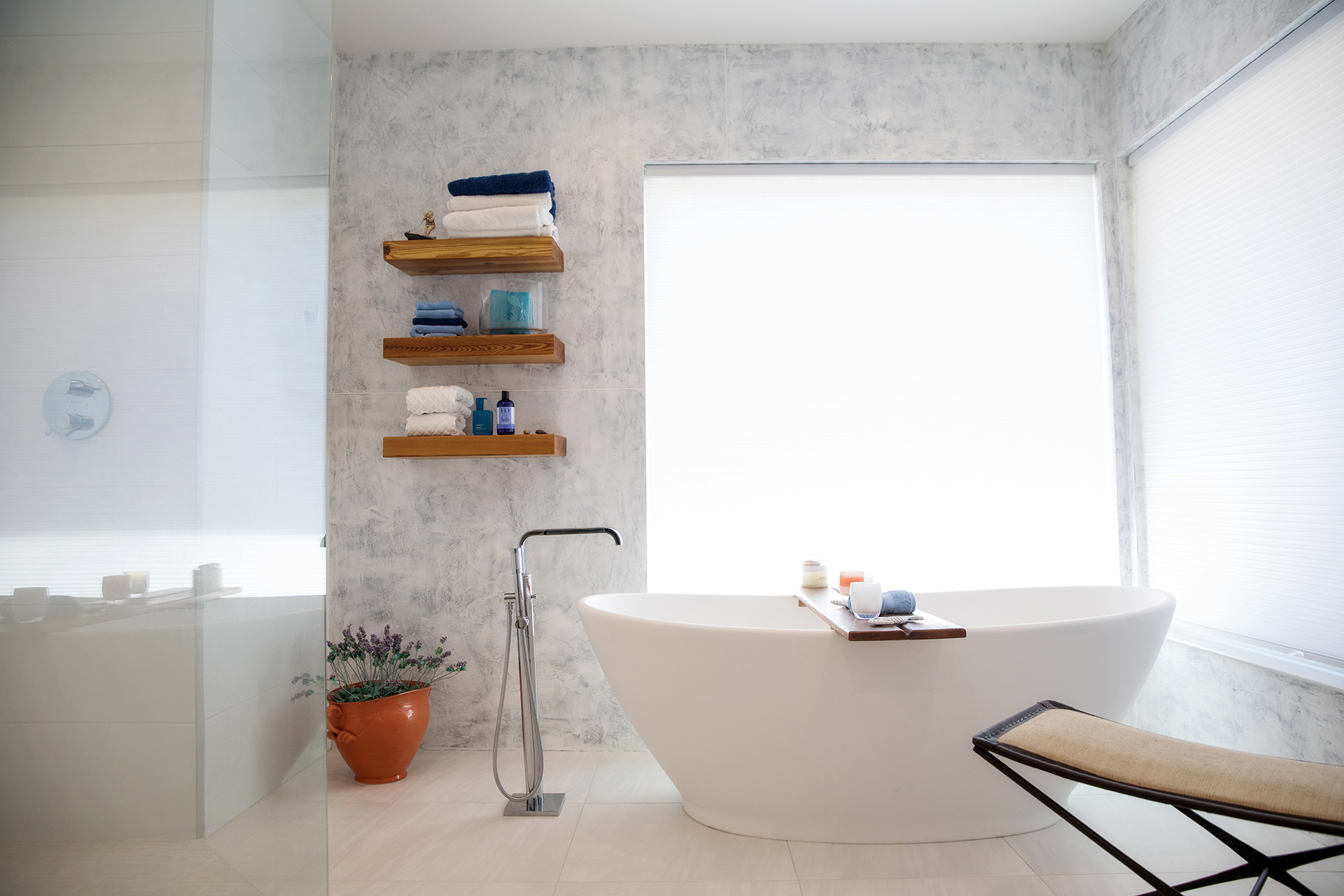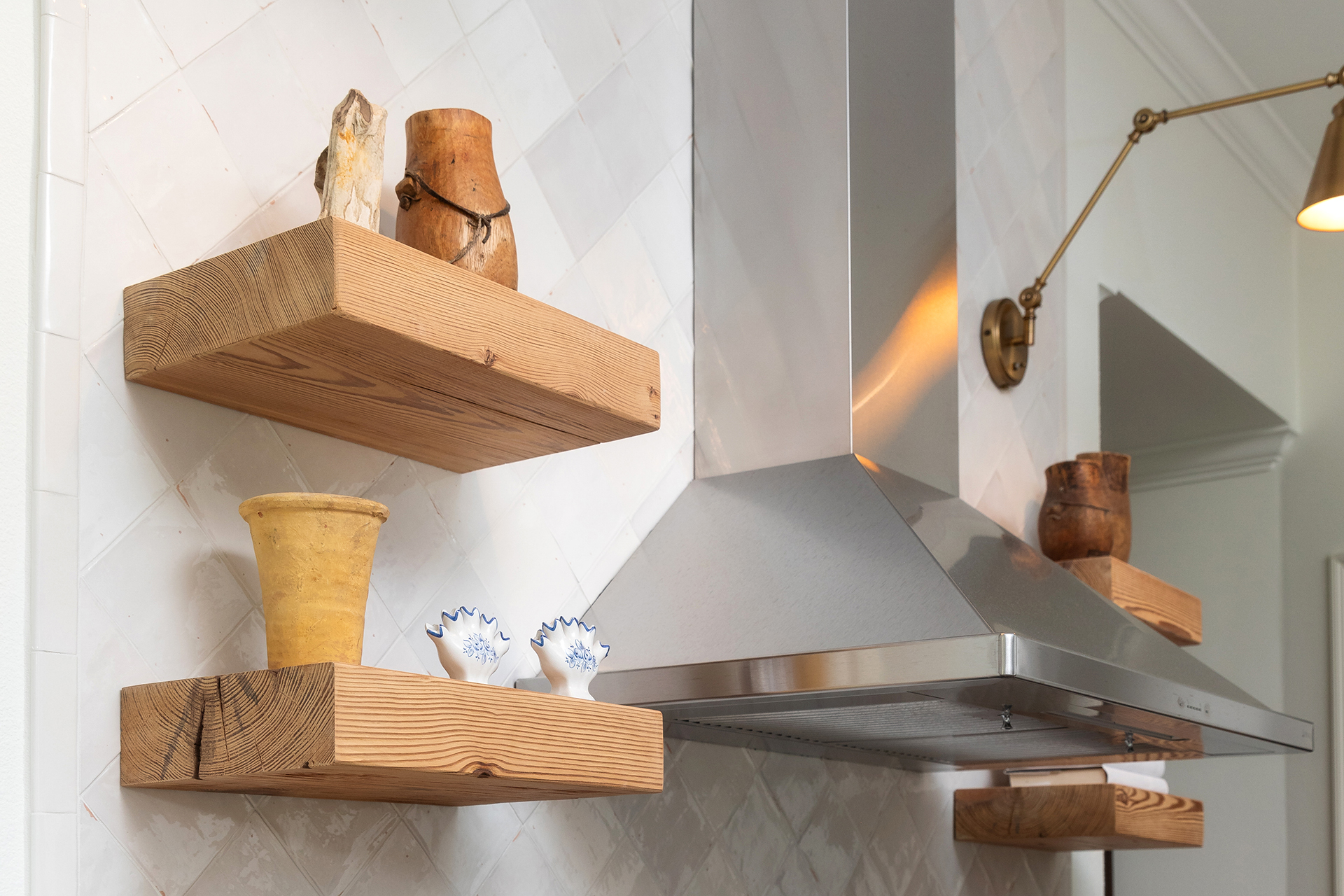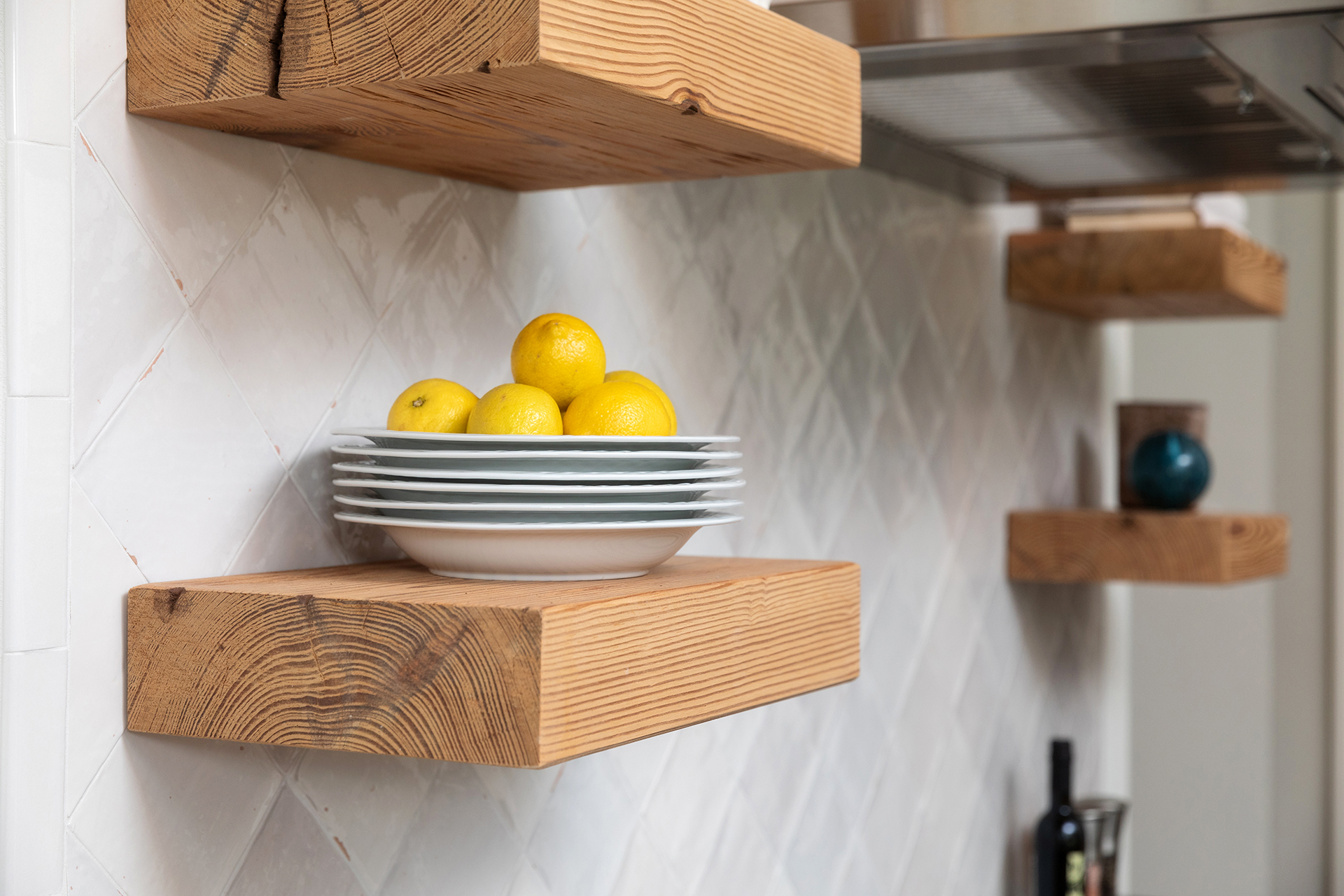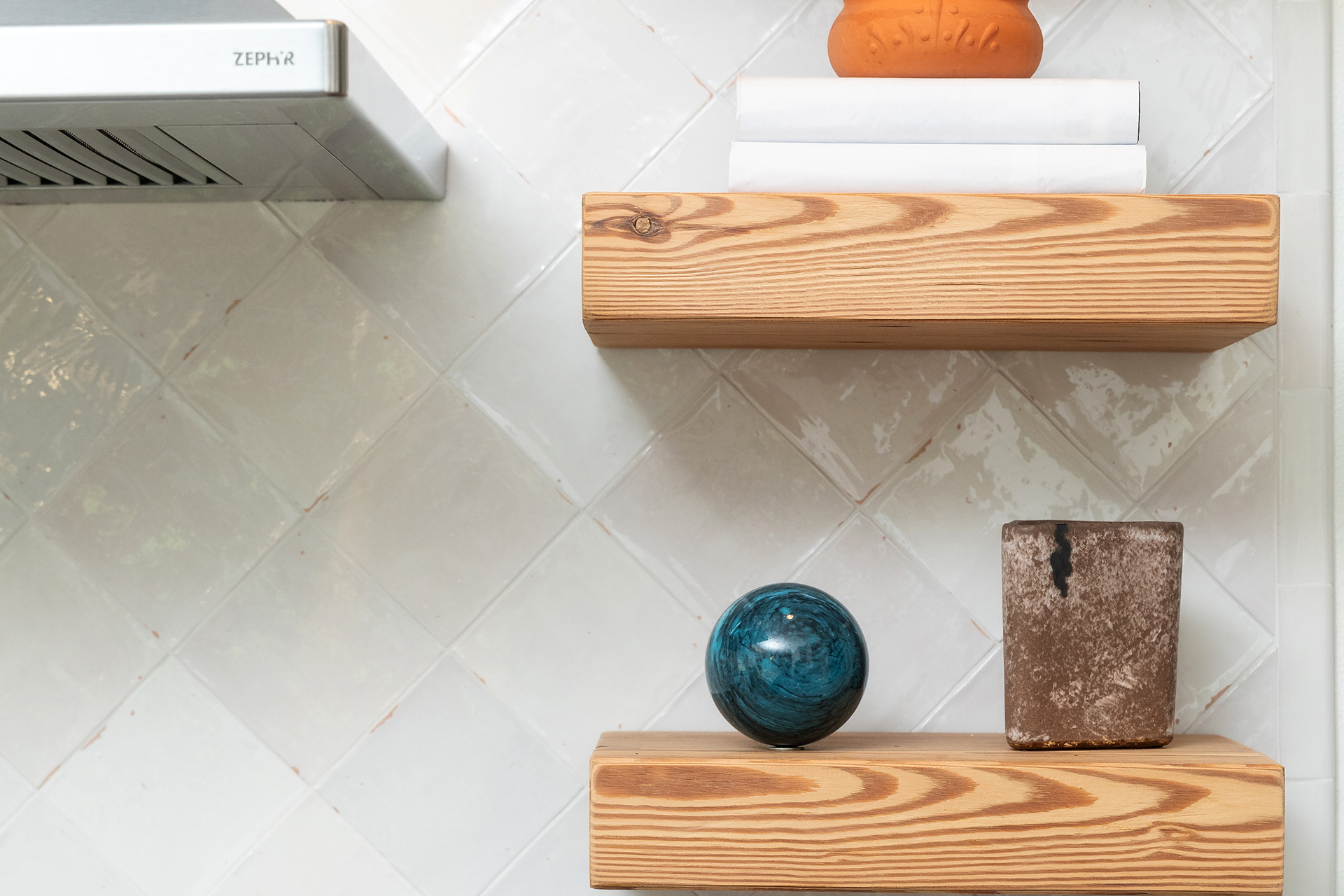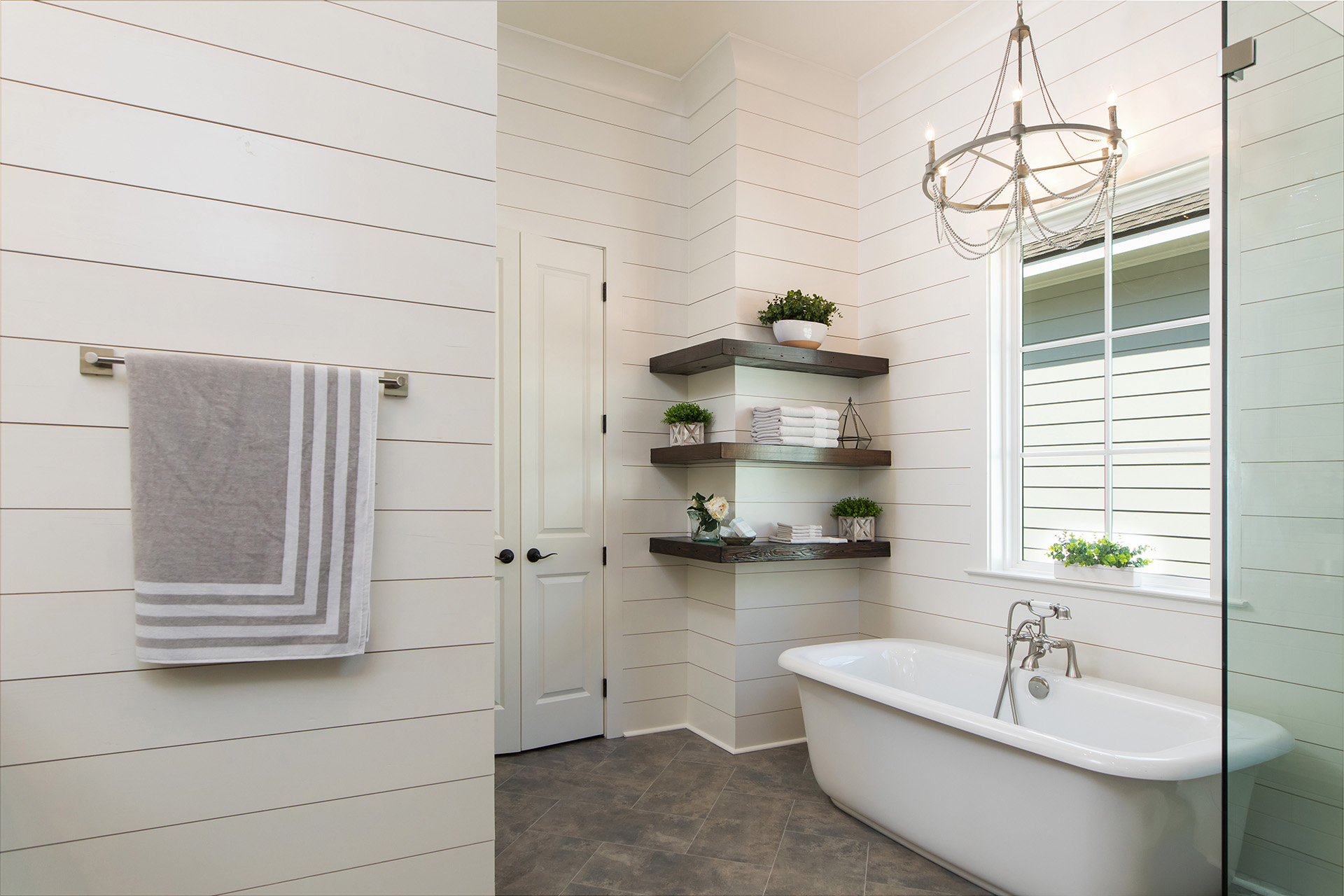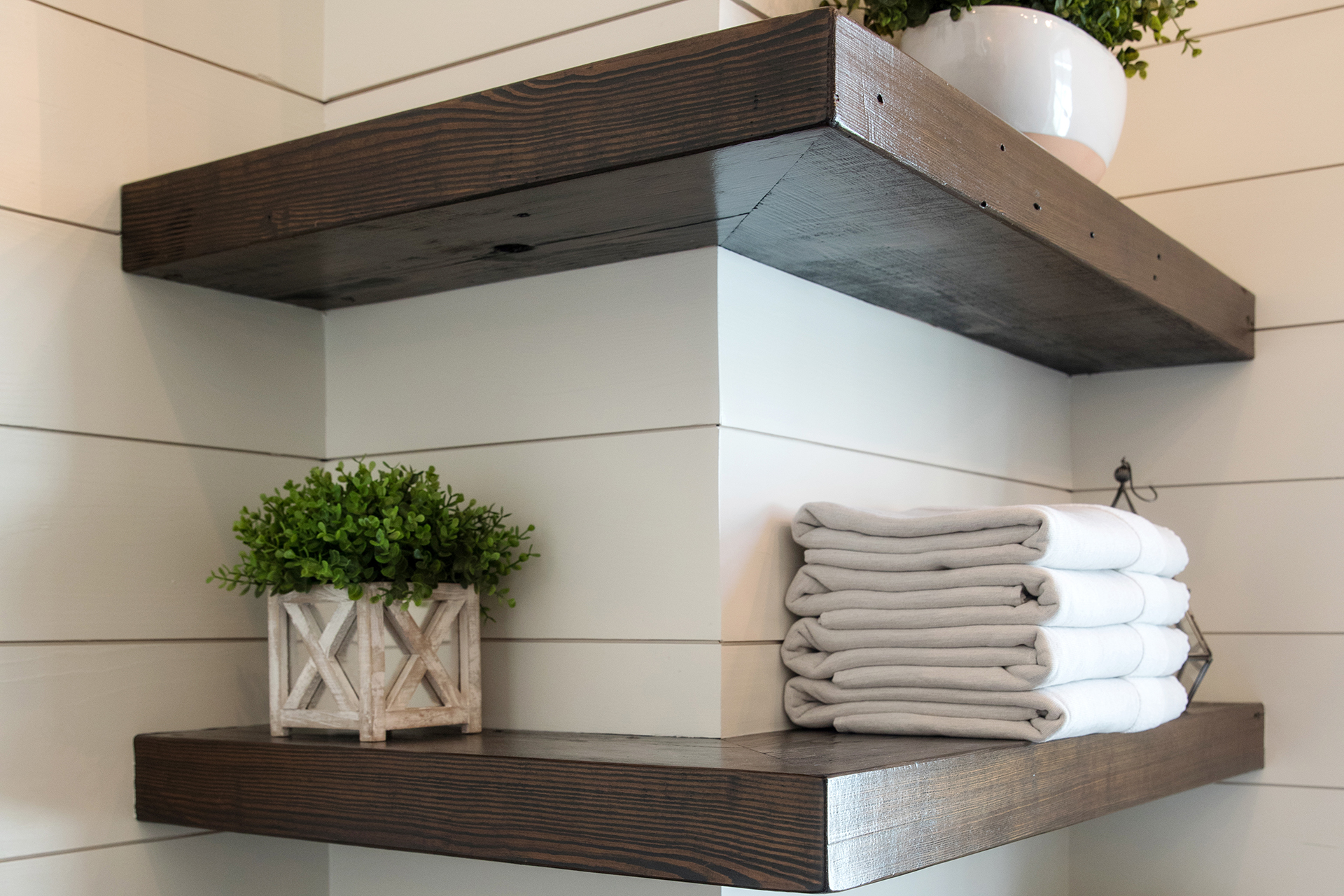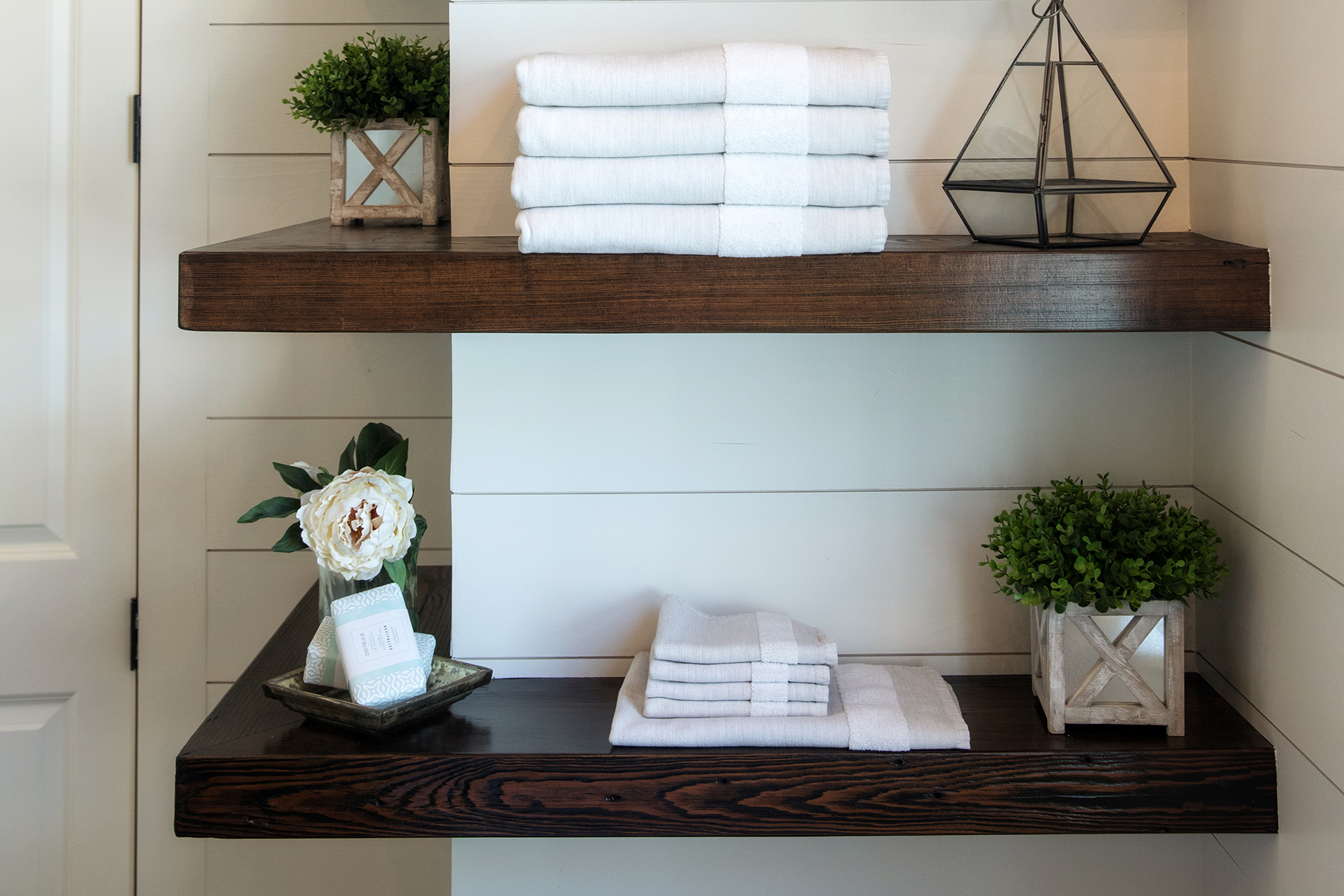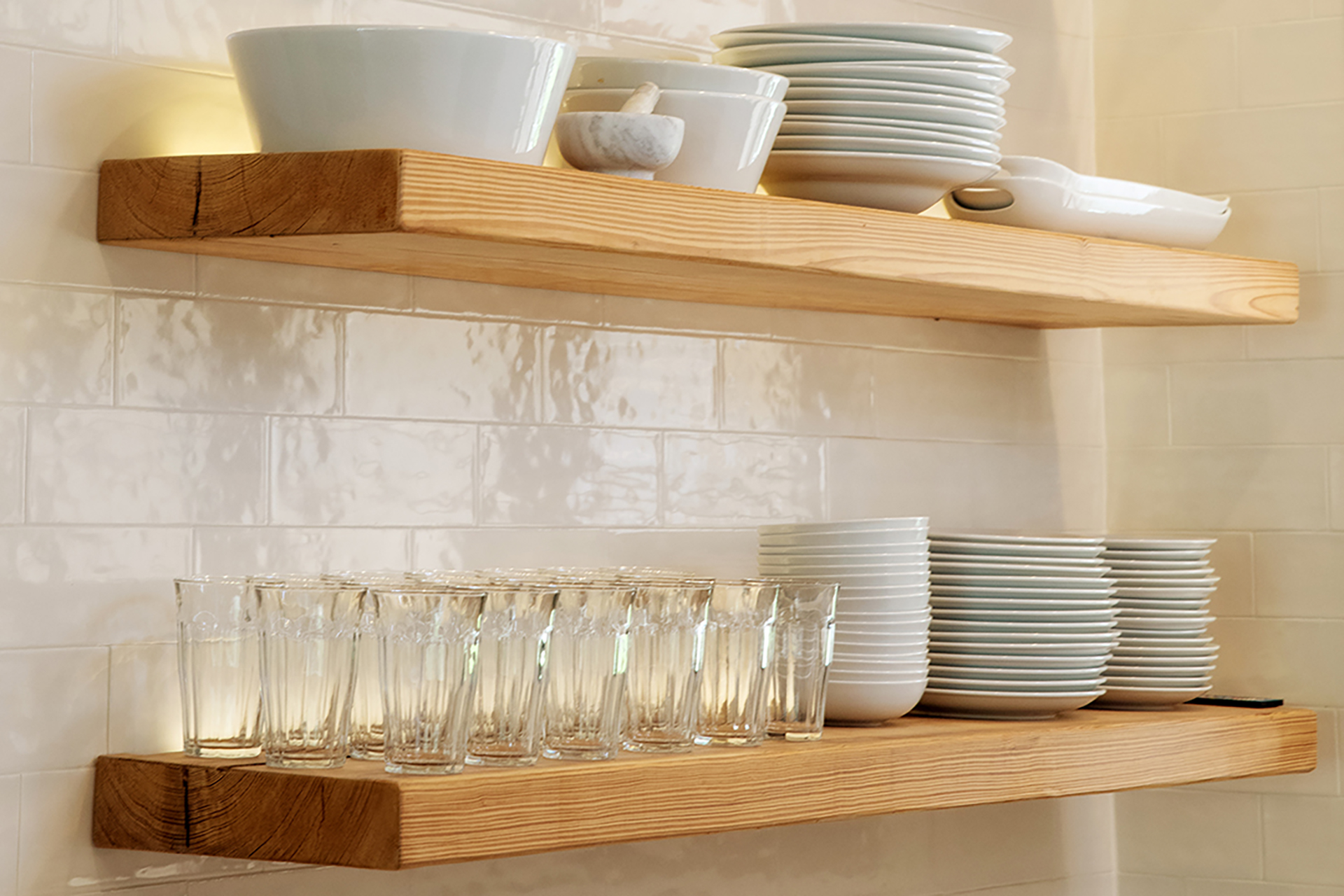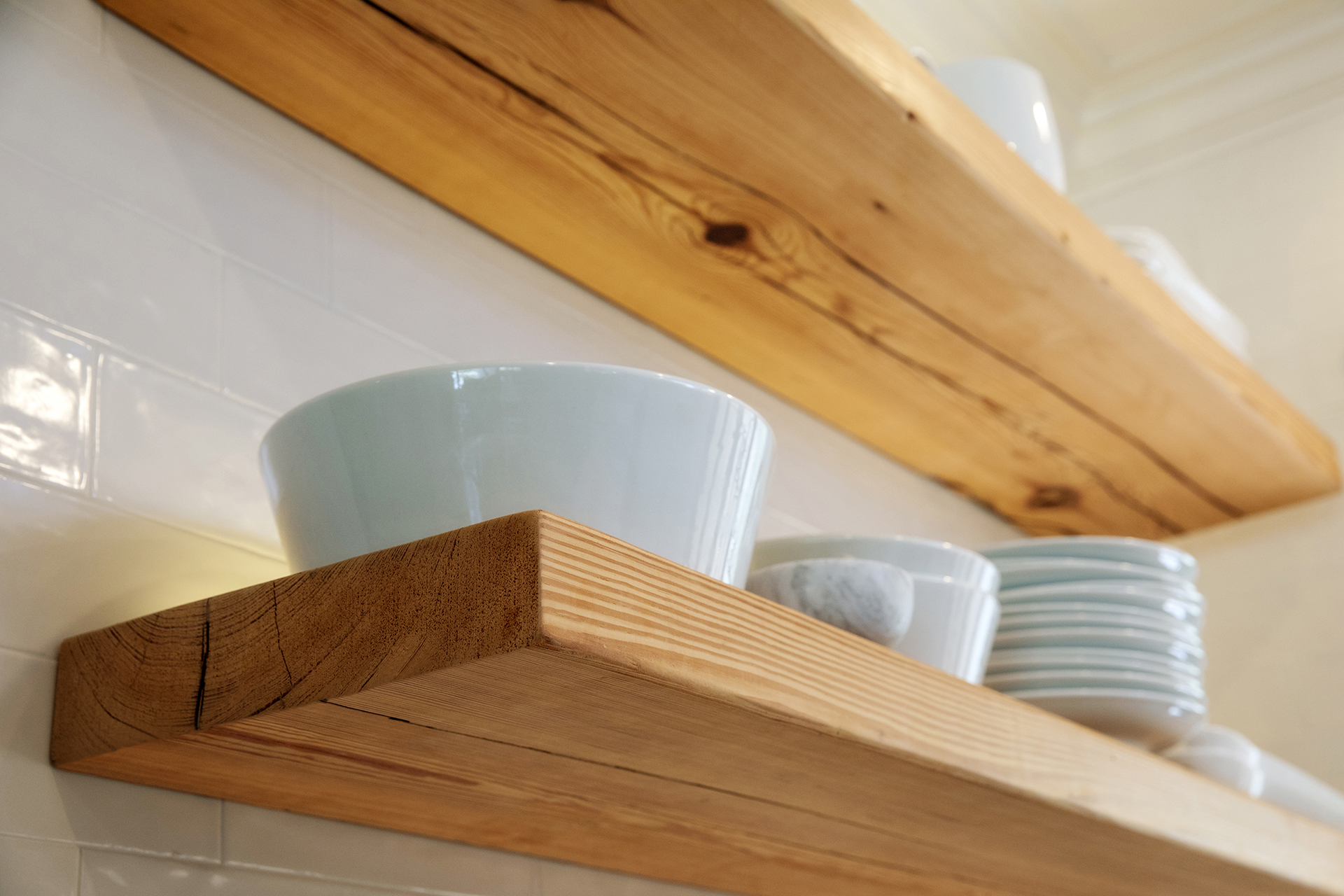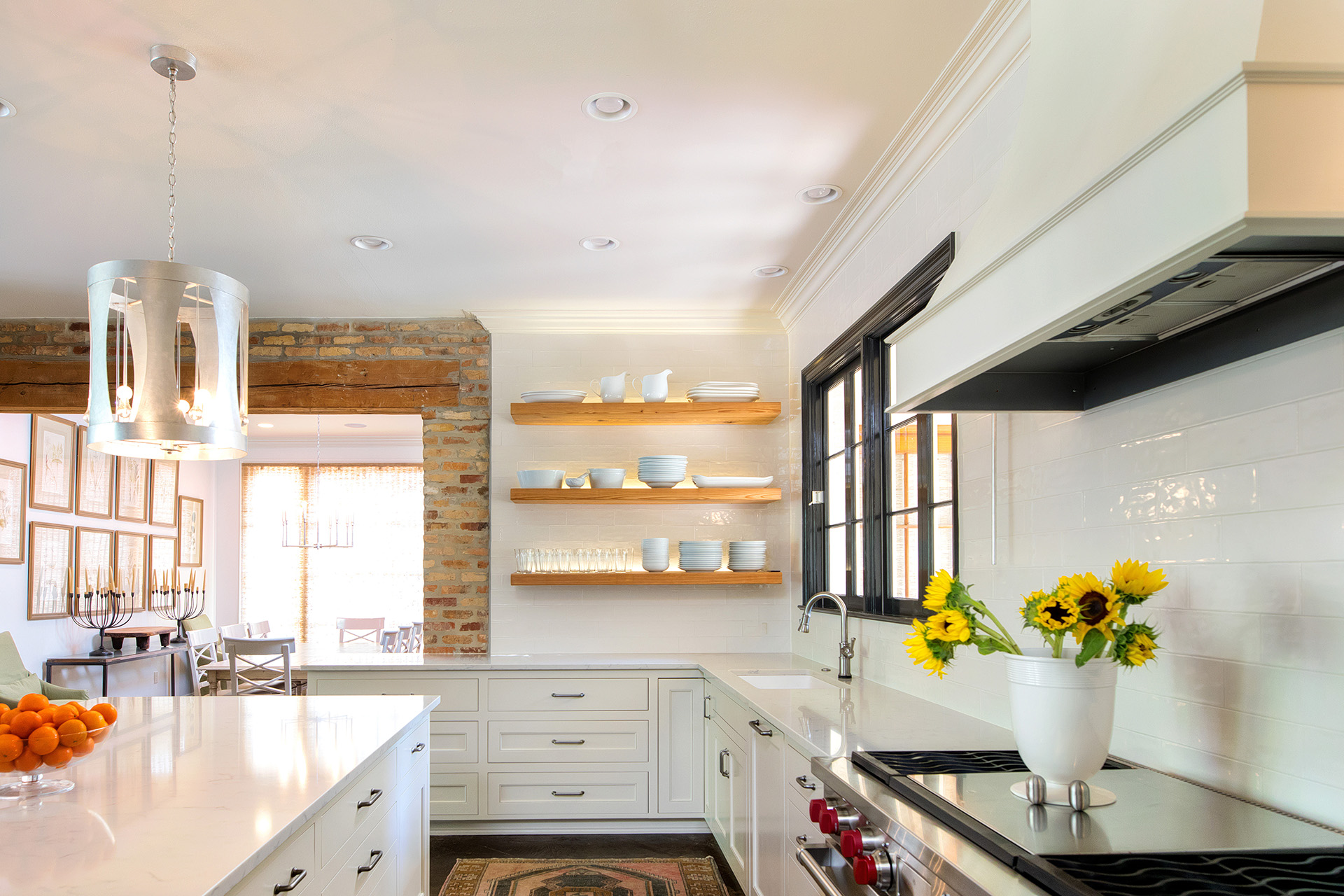Anyone in the home building industry can tell you that most homes are shifting toward a more open design, with the first step being an open floor plan. By removing the boundaries between certain spaces, home designers create a feeling of freedom far from the restrictions of utilitarian, closed floor plans. After switching to an open floor plan, what is the next step to creating a space that feels “open”? We at The Olde Mill think floating shelves can greatly enhance this feeling of freedom and accessibility.
Cabinet, Open, or Floating?
When it comes to storage, consider the three overall categories:
- Traditional cabinets, which use hinged doors to protect and/or hide their contents.
- Open shelves, which have no doors, but are closed off on the sides and connected.
- Floating shelves, which are open on all sides and rely on individual supports.
Each category has its advantages. You’ll want to keep valuable chinaware, etc. protected in a cabinet, but you shouldn’t have a cabinet door in front of anything you need to grab quickly. Open shelves are great for desks, offices, and studies because they allow for organization and fast access. Finally, floating shelves offer complete exposure and creative freedom but need adequate support.
We love the creative possibilities floating shelves allow. For this blog post, we want to share a few tips and insights for using floating shelves in your home.
5 Tips for Using Floating Shelves
1. Get Creative
If there’s one thing we want to stress, it’s this: floating shelves can be used in practically any application. We see floating shelves in kitchens the most, usually flanking the sink or oven range, but we’re noticing a lot more in living rooms and bathrooms. Where a traditional fireplace might be flanked by upper cabinets or open shelving, people opt for floating shelves instead. In bathrooms, we notice a preference for floating shelves near the tub or vanity.
When it comes to layout, consider alignment and spacing. Three shelves in a perfect row will create a sense of order but offset them and you could have something more inventive. The rule of thumb for spacing is 12 inches between each shelf but bump that up to 15 or 18 inches and you enhance that sense of exposure and accessibility. Length is where you’ll see the most variation.
Fun Fact: The longest shelf The Olde Mill ever produced was 11 feet long, but the longest we are able to produce is 25 feet long.
2. Maximum Minimalism
Like someone who’s bad at hide-and-seek, floating shelves are completely exposed. Some people might consider this a disadvantage because clutter might be revealed or shelves might get dusty.
We see this as an opportunity to stay clean and organized. You might have to be more deliberate with what you place on your shelves but trust us. With no place to hide, you will notice the contents of your shelves tend to be more tidy and intentional. Plus, this is the perfect opportunity to really show off your favorite decor.
3. Don’t Cut Corners
As a manufacturer of floating shelves, we value shelf space. When we look at an exposed corner, we immediately think, “Is there any reason I can’t put a shelf here?” Corners can go overlooked sometimes, but we find they are a great opportunity to incorporate more storage space where you might not expect it. For display purposes, place something on the outside corner of a shelf to have it literally stand out from its surroundings.
4. Light ‘em Up
Floating shelves can be used for more than just storage and showcasing. Run some lights through them and you can create a spectacular display. Downlighting is a practical choice for shelves placed above countertops, workspaces, and paths of travel. Uplighting can create a dramatic effect for those looking to make a statement, or just illuminate more empty space.
5. Plan Them Out
Finally, you’ll want to make sure your floating shelves are sturdy, rigid, and well-secured. Develop a plan for your floating shelves and set up blocking behind your drywall to give the shelf something solid to mount upon. Don’t skimp on your mounting brackets, either. Account for what you’ll be using your shelves for, and how much weight they will have to support, as well as any unexpected weight. In other words, play it safe. The last thing you want is all your favorite cups crashing down around you just because you added one to the collection.



